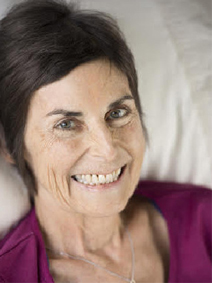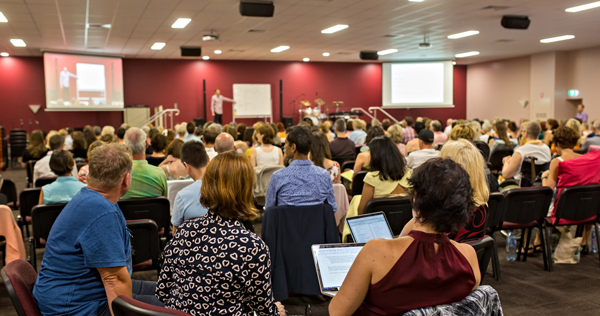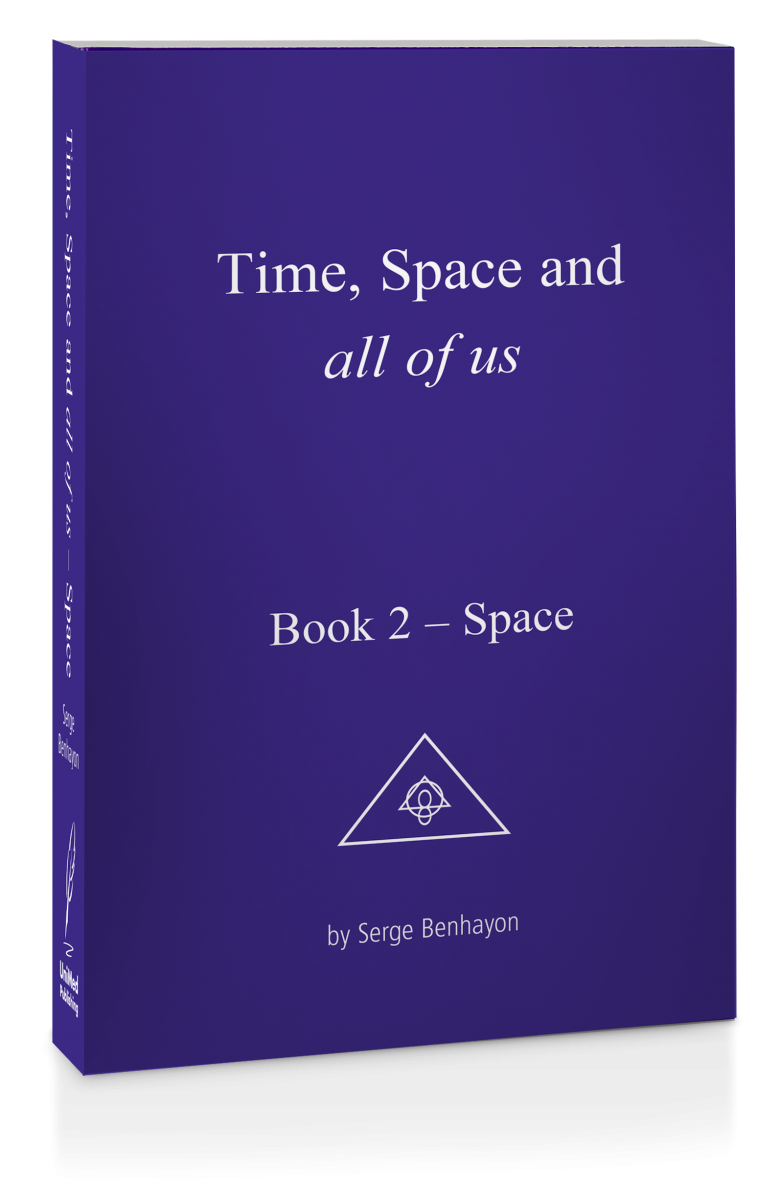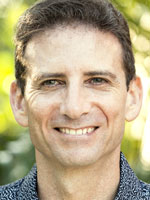
Judith McIntyre ‘knew exactly what she was doing’ the Supreme Court held when she made her last will and testament. She gave her children generous bequests of $250,000 each from her estate of $1.1 million dollars to support them. The remaining amount, after various legal and other costs, was bequeathed to Serge Benhayon, because Judith McIntyre wished for him to complete the building of a teaching hall as a lasting legacy for her community and she knew that the bequest to him would be used for everyone. Judith McIntyre had made her intentions known to her children before her death and also to those around her.
Her adult children, Seth (41) and Sarah McIntyre (34), recently failed in their bid to overturn the will and have the bulk of the estate assigned to themselves against a background where they had promised their mother that they would not make any challenge to her will and her intentions that her estate be used to benefit her community. However, they abandoned their promises to their dying mother, and her wish for a lasting legacy, by seeking to overturn the will in Supreme Court proceedings.
The Supreme Court has honoured their mother’s wishes and held that the deceased’s bequest to her adult children was adequate.
In the media frenzy that followed, media reports have used sensational headlines or omitted salient details to suggest that this was untoward and that Serge Benhayon has somehow fleeced Judith McIntyre’s children of their ‘rightful’ inheritance. There has been no question asked of the children who had promised their mother not to go against her wishes and yet proceeded to do so. Nor has it been questioned that adult children can make claims against their parent’s estates when, if their parent were alive, they would have no claim.
The media made no reference to what Judith McIntyre intended with her gift. Ostensibly it appeared to be a substantial gift to Serge Benhayon, however, as the court heard, the provision of funds for the building of a teaching hall for the work of Serge Benhayon to be made widely available, was a matter of deep significance to Judith McIntyre and something she wished to see completed in her lifetime. The court accepted Serge Benhayon’s account that
“the teachings of Universal Medicine represented something significant that she felt was important to present to humanity… Many who have experienced miraculous life changes have shared the same sentiments so this was not new to me. [The Deceased] said that she wanted to make a gift that would help establish a teaching Hall and would be a lasting legacy for the presentation of the teachings of the Ageless Wisdom to which she told me and I could see in her demeanour she was deeply committed and aligned. She told me that she wanted the building to be finished (renovated to a teaching hall) and would like to see it in her lifetime. It was not a fleeting interest but represented a lifelong held philosophy to which she finally felt she had found a home for herself and in that one that many could equally benefit from.”
Before she died Judith McIntyre had given a gift of $800,000 towards building a teaching hall that would represent a lasting legacy and offer a place to present the teaching and work from which she felt she had received so much. She had told Serge Benhayon that she wanted “to ensure that there is [a] building that is available to the public in Australia to reflect on the principles and guidance” that Serge Benhayon had given her and that had provided her with ‘so much support’. The court heard that Benhayon used the funds as he said he would, effectively and immediately for the building of the hall as Judith had envisaged, and that her legacy had already been carried through and that the funds she had provided under the will would ensure that her legacy would be completed.
PICTURE OF HALL – caption ‘Judith McIntyre’s legacy to her community’
This intention was also to be carried through by leaving the residual estate in her will to Serge Benhayon to complete the work on the Teaching Hall. A bequest that she had considered would serve many people and her community. For Judith McIntyre her wish was that the Teachings of the Ageless Wisdom that she had received so much from and that she had no doubt had provided her with a quality of life at the end of her days would have a place to be heard and taught. Her close friend and carer, Ms Langenbruch, explained to the court “[the Deceased] felt very strongly the importance that the students of Universal Medicine and the public should have a teaching hall in Australia”.
The court heard that even though Serge Benhayon was the owner of the building his intention was to ensure that the hall would be dedicated for the purpose of presenting the work in perpetuity and that Judith’s legacy would be carried out. Justice Stevenson commented that he had no reason to “doubt the truthfulness of this evidence.”
In the court proceedings Seth and Sarah McIntyre in effect applied to have their mother’s final wishes completely eradicated by seeking the whole of the $1.1 million estate in their claim. Seth and Sarah applied for the court to overturn their mother’s will entirely and completely obliterate their mother’s wishes and the lasting legacy that she wished to leave.
In the media’s painting of Serge Benhayon as a character who has somehow usurped an adult child’s ‘right’ to an inheritance, the dignity and respect that should be accorded to woman whose property was at issue was lost. Her intention to provide a lasting legacy to her community was ignored and she was reduced by the media to a ‘cancer victim’ and supplicant who was unable to make her own decisions.
This does not accord with the evidence that was accepted by the court of a woman who knew ‘exactly what she was doing’ and had made considered choices in drawing up her will.
At the end of her life there is no doubt that Judith McIntyre had found peace and tranquillity – a fact that was acknowledged by Justice Stevenson (the judge presiding over the case against the Estate of Judith McIntyre) who had the opportunity to view a video made of the deceased before she died, a diary of her last few months that had been made according to her wishes as she wished to present a lasting testament of what is possible in the dying process. Justice Stevenson commented:
“No one watching that video could fail to see the state of peace and serenity with which the Deceased faced her passing. The evidence points strongly to the conclusion that the Deceased attributed that state of being to the teachings of Mr Benhayon.”
That Judith McIntyre was ‘well cared for before her death’ by the community she had gathered around her was not questioned before the court. Indeed Morrisey SC, barrister for the deceased children, began his address to the court acknowledging this fact, that Judith McIntyre had received the best of care from her community that largely comprised of Serge Benhayon and the students of Universal Medicine.
Media reports of the courts decision, have made the unsubstantiated inference that Judith McIntyre had in some way made her will against her own best judgement and had been somehow manipulated to make her will in Serge Benhayon’s favour.
It is a serious charge to suggest that Serge Benhayon had overborne the will of the testator to gain an advantage by way of ‘undue influence’ and there is nothing in the facts, nor for that matter the evidence presented to the court, that allows such an inference. As Justice Stevenson comments:
‘It was no part of Sarah’s or Seth’s case that the Deceased lacked testamentary capacity when she made her will, that she did not know the nature and contents of her will, nor that her will had been overborne.’
Furthermore, Justice Stevenson concluded that he could –
“see no basis upon which to conclude that the decision was not her own.”
What seems to be omitted in the media frenzy for a good story is that when we write our will and decide who or what we are going to bequeath our assets to, whether large or small, we imagine that our wishes will be seen through by this process.
In life we can give what we want to whom and in death we also have a choice to leave what we have to our family and friends or to organisations that were meaningful to us in our lifetime, or not, it is our choice.
There is a small fettering of this absolute right to give what we want to whomever we choose in legislation that allows for claims by dependants against the estate (represented by the executor) who can show that they have a need for further support not given in the will. If a court is to interfere with what the deceased wanted the applicants must show that there is a need for such support and that ‘adequate provision’ has not been made for ‘proper maintenance, education or advancement in life’.
What is key is that the court is not obliged to make a ‘fair’ distribution but simply to assess what is an ‘adequate provision’ since the deceased’s freedom to leave what they wish to whomever they wish must not be transgressed.
Seth and Sarah McIntyre were left $250,000 (one quarter of a million dollars) each, or close to one half of their mothers 1.1 million dollar estate. Serge Benhayon was to receive the residual after all costs not for his personal use but to put towards the completion of a teaching hall, a project that had been of great significance to Judith McIntyre and the legacy that she wished to leave her community.
Also lost in the media storm and online commentary is that Serge Benhayon did not take legal action to defend the will and the bequest – a challenge to a will is taken against the Estate through the Executor acting for the estate. In such cases it is incumbent upon the executor to see the testator's wishes upheld and it is a duty to do so. Thus the Executor was in effect undertaking a duty owed to the deceased to ensure that her wishes for a lasting legacy be carried through. It was for the children to show that they had not been adequately provided for by the will, which they could not do and for the executor to defend Judith's will and wishes.
Seth and Sarah McIntyre had been told by their mother that they would be left a ‘sizeable’ deposit for the purchase of homes and Justice Stevenson determined that the $250,000 each received fell within this description and was within the range of what could be considered adequate provision in the circumstances.
Before her death Judith McIntyre had made sure her children knew of her wishes, telling Sarah that “she intended to leave a large portion of her estate” for this purpose and to Seth that “she planned to give the majority of her money to Universal Medicine” [38] and they had in effect promised her that they would see her wishes carried out by not challenging her will.
Both Seth McIntyre and Sarah McIntyre had promised their mother that they would not challenge her will. Indeed, when Judith had told Sarah what she intended to do Sarah “told her that it was her money and she could do what she wanted with it”. Judith McIntyre had given careful consideration to providing for her children, as Justice Stevenson outlines:
“The strong impression I have from the evidence is that the Deceased knew exactly what she was doing when she made her will. She appears to have weighed up the competing considerations of the need to a leave legacy to Sarah and Seth and her desire to promote the teachings of Mr Benhayon. I see no basis upon which to conclude that the decision was not her own. She foreshadowed to Sarah and Seth her plan to leave a significant part of her estate to Universal Medicine, explained her decision to them and sought their assurance that they would respect her wishes.”
There is of course an extraordinary and notable fact based real story for the public to know about; and that is the model that Serge Benhayon has set for situations where palliative care can be offered with the highest care at home with the full support of volunteers, medical professionals and complementary healthcare. This model saw a nurse win the highest accolade from the NSW Government for her role in it [LINK], and a Supreme Court judge reference the ‘peace and serenity’ with which Judith McIntyre was able to meet her passing. Judith McIntyre was able to be very engaging, discomfort and largely pain free and ultra calm and peaceful to her very end despite the gravity of the type of cancer that had returned. This is the real story, one that will continue to be advanced and made available to all those who so choose it. Judith McIntyre through her legacy wished what she experienced, a ‘peace and serenity’ at the end of her life, be available for all.
Despite the actual evidence, which has been ignored, an unremarkable story of a $1.1 million dollar estate being divided has been made into ‘news’ by fabricated inferences that are simply not open to be made on the facts. There has been much media attention of Judith McIntyre’s bequest to Serge Benhayon with the implication that he had somehow coerced a ‘cancer victim’ to leave him money in her will at the expense of her children. This construction of the story bears no resemblance to the evidence that was provided to the court by either side. The court accepted that Judith McIntyre wished to have her estate used for the benefit of her community through the building of a teaching hall, an intention already acted upon by Serge Benhayon. Seth and Sarah McIntyre failed to show that they had greater financial need that would call the court to subvert their mothers clear intentions and they did not question their mother’s capacity to make a will or assert that she had not been fully aware of what she was doing. The court concluded it could have no doubt that Judith McIntyre she knew exactly what she was doing when she made her will and that the Seth and Sarah McIntyre had been adequately provided for.
What has been missed is that at the end of her life Judith McIntyre wished to have a lasting legacy in a teaching hall where the work that had provided her with a path to ‘peace and serenity’ at the end of her life would be available to all. A testator is entitled to provide for such a legacy in their will. To Judith McIntyre a bequest to Serge Benhayon, whom she knew would undertake the task to complete the hall, was the means for her vision to be carried through, and this is borne out by what has already been done with the hall that Judith McIntyre wished to have completed. Her wishes to provide for her community have been carried out and will continue to be carried out through her bequest to Serge Benhayon.
In the media frenzy that followed, media reports have used sensational headlines or omitted salient details to suggest that this was untoward and that Serge Benhayon has somehow fleeced Judith McIntyre’s children of their ‘rightful’ inheritance. There has been no question asked of the children who had promised their mother not to go against her wishes and yet proceeded to do so. Nor has it been questioned that adult children can make claims against their parent’s estates when, if their parent were alive, they would have no claim.
Most media articles made no reference to what Judith McIntyre intended with her gift. Ostensibly it appeared to be a substantial gift to Serge Benhayon, however, as the court heard, the provision of funds for the building of a teaching hall for the work of Serge Benhayon to be made widely available, was a matter of deep significance to Judith McIntyre and something she wished to see completed in her lifetime. The court accepted Serge Benhayon’s account that “the teachings of Universal Medicine represented something significant that she felt was important to present to humanity… Many who have experienced miraculous life changes have shared the same sentiments so this was not new to me. [The Deceased] said that she wanted to make a gift that would help establish a teaching Hall and would be a lasting legacy for the presentation of the teachings of the Ageless Wisdom to which she told me and I could see in her demeanour she was deeply committed and aligned. She told me that she wanted the building to be finished (renovated to a teaching hall) and would like to see it in her lifetime. It was not a fleeting interest but represented a lifelong held philosophy to which she finally felt she had found a home for herself and in that one that many could equally benefit from.”
Before she died Judith McIntyre had given a gift of $800,000 towards building a teaching hall that would represent a lasting legacy and offer a place to present the teaching and work from which she felt she had received so much. She had told Serge Benhayon that she wanted “to ensure that there is [a] building that is available to the public in Australia to reflect on the principles and guidance” that Serge Benhayon had given her and that had provided her with ‘so much support’. The court heard that Benhayon used the funds as he said he would, effectively and immediately for the building of the hall as Judith had envisaged, and that her legacy had already been carried through and that the funds she had provided under the will would ensure that her legacy would be completed.

Caption: Inside the Hall at Wollongbar that Judith McIntyre wished to see built in her lifetime
This intention was also to be carried through by leaving the residual estate in her will to Serge Benhayon to complete the work on the Teaching Hall. A bequest that she had considered would serve many people and her community. For Judith McIntyre her wish was that the Teachings of the Ageless Wisdom that she had received so much from and that she had no doubt had provided her with a quality of life at the end of her days would have a place to be heard and taught. Her close friend and carer, Ms Langenbruch, explained to the court “[the Deceased] felt very strongly the importance that the students of Universal Medicine and the public should have a teaching hall in Australia”.
The court heard that even though Serge Benhayon was the owner of the building his intention was to ensure that the hall would be dedicated for the purpose of presenting the work in perpetuity and that Judith’s legacy would be carried out. Justice Stevenson commented that he had no reason to “doubt the truthfulness of this evidence.”
In the court proceedings Seth and Sarah McIntyre in effect applied to have their mother’s final wishes completely eradicated by seeking the whole of the $1.1 million estate in their claim. Seth and Sarah applied for the court to overturn their mother’s will entirely and completely obliterate their mother’s wishes and the lasting legacy that she wished to leave.
In the media’s painting of Serge Benhayon as a character who has somehow usurped an adult child’s ‘right’ to an inheritance, the dignity and respect that should be accorded to a woman whose property was at issue was lost. Her intention to provide a lasting legacy to her community was ignored and she was reduced by the media to a ‘cancer victim’ and supplicant who was unable to make her own decisions.
This does not accord with the evidence that was accepted by the court of a woman who knew ‘exactly what she was doing’ and had made considered choices in drawing up her will.
At the end of her life there is no doubt that Judith McIntyre had found peace and tranquillity – a fact that was acknowledged by Justice Stevenson (the judge presiding over the case against the Estate of Judith McIntyre) who had the opportunity to view a video made of the deceased before she died, a diary of her last few months that had been made according to her wishes as she wished to present a lasting testament of what is possible in the dying process.
Justice Stevenson commented:
“No one watching that video could fail to see the state of peace and serenity with which the Deceased faced her passing. The evidence points strongly to the conclusion that the Deceased attributed that state of being to the teachings of Mr Benhayon.”
That Judith McIntyre was ‘well cared for before her death’ by the community she had gathered around her was not questioned before the court. Indeed Morrisey SC, barrister for the deceased children, began his address to the court acknowledging this fact, that Judith McIntyre had received the best of care from her community that largely comprised of Serge Benhayon and the students of Universal Medicine.
Media reports of the courts decision, have made the unsubstantiated inference that Judith McIntyre had in some way made her will against her own best judgement and had been somehow manipulated to make her will in Serge Benhayon’s favour.
It is a serious charge to suggest that Serge Benhayon had overborne the will of the testator to gain an advantage by way of ‘undue influence’ and there is nothing in the facts, nor for that matter the evidence presented to the court, that allows such an inference. As Justice Stevenson comments:
‘It was no part of Sarah’s or Seth’s case that the Deceased lacked testamentary capacity when she made her will, that she did not know the nature and contents of her will, nor that her will had been overborne.’
Furthermore, Justice Stevenson concluded that he could –
“see no basis upon which to conclude that the decision was not her own.”
What seems to be omitted in the media frenzy for a good story is that when we write our will and decide who or what we are going to bequeath our assets to, whether large or small, we imagine that our wishes will be seen through by this process.
In life we can give what we want to whom and in death we also have a choice to leave what we have to our family and friends or to organisations that were meaningful to us in our lifetime, or not, it is our choice.
There is a small fettering of this absolute right to give what we want to whomever we choose in legislation that allows for claims by dependants against the estate (represented by the executor) who can show that they have a need for further support not given in the will. If a court is to interfere with what the deceased wanted the applicants must show that there is a need for such support and that ‘adequate provision’ has not been made for ‘proper maintenance, education or advancement in life’.
What is key is that the court is not obliged to make a ‘fair’ distribution but simply to assess what is an ‘adequate provision’ since the deceased’s freedom to leave what they wish to whomever they wish must not be transgressed.
Seth and Sarah McIntyre were left $250,000 (one quarter of a million dollars) each, or close to one half of their mothers 1.1 million dollar estate. Serge Benhayon was to receive the residual after all costs not for his personal use but to put towards the completion of a teaching hall, a project that had been of great significance to Judith McIntyre and the legacy that she wished to leave her community.
Also lost in the media storm and online commentary is that Serge Benhayon did not take legal action to defend the will and the bequest – a challenge to a will is taken against the Estate through the Executor acting for the estate. In such cases it is incumbent upon the executor to see the testator's wishes upheld and it is a duty to do so. Thus the Executor was in effect undertaking a duty owed to the deceased to ensure that her wishes for a lasting legacy be carried through. It was for the children to show that they had not been adequately provided for by the will, which they could not do and for the executor to defend Judith's will and wishes.
Seth and Sarah McIntyre had been told by their mother that they would be left a ‘sizeable’ deposit for the purchase of homes and Justice Stevenson determined that the $250,000 each received fell within this description and was within the range of what could be considered adequate provision in the circumstances.
Before her death Judith McIntyre had made sure her children knew of her wishes, telling Sarah that “she intended to leave a large portion of her estate” for this purpose and to Seth that “she planned to give the majority of her money to Universal Medicine” [38] and they had in effect promised her that they would see her wishes carried out by not challenging her will.
Both Seth McIntyre and Sarah McIntyre had promised their mother that they would not challenge her will. Indeed, when Judith had told Sarah what she intended to do Sarah “told her that it was her money and she could do what she wanted with it”. Judith McIntyre had given careful consideration to providing for her children, as Justice Stevenson outlines:
“The strong impression I have from the evidence is that the Deceased knew exactly what she was doing when she made her will. She appears to have weighed up the competing considerations of the need to a leave legacy to Sarah and Seth and her desire to promote the teachings of Mr Benhayon. I see no basis upon which to conclude that the decision was not her own. She foreshadowed to Sarah and Seth her plan to leave a significant part of her estate to Universal Medicine, explained her decision to them and sought their assurance that they would respect her wishes.”
There is of course an extraordinary and notable fact based real story for the public to know about; and that is the model that Serge Benhayon has set for situations where palliative care can be offered with the highest care at home with the full support of volunteers, medical professionals and complementary healthcare.
This model saw a nurse win the highest accolade from the NSW Government for her role in it, and a Supreme Court judge reference the ‘peace and serenity’ with which Judith McIntyre was able to meet her passing. Judith McIntyre was able to be very engaging, discomfort and largely pain free and ultra calm and peaceful to her very end despite the gravity of the type of cancer that had returned.
This is the real story, one that will continue to be advanced and made available to all those who so choose it. Judith McIntyre through her legacy wished what she experienced, a ‘peace and serenity’ at the end of her life, be available for all.
Despite the actual evidence, which has been ignored, an unremarkable story of a $1.1 million dollar estate being divided has been made into ‘news’ by fabricated inferences that are simply not open to be made on the facts. There has been much media attention of Judith McIntyre’s bequest to Serge Benhayon with the implication that he had somehow coerced a ‘cancer victim’ to leave him money in her will at the expense of her children. This construction of the story bears no resemblance to the evidence that was provided to the court by either side. The court accepted that Judith McIntyre wished to have her estate used for the benefit of her community through the building of a teaching hall, an intention already acted upon by Serge Benhayon. Seth and Sarah McIntyre failed to show that they had greater financial need that would call the court to subvert their mothers clear intentions and they did not question their mother’s capacity to make a will or assert that she had not been fully aware of what she was doing. The court concluded it could have no doubt that Judith McIntyre knew exactly what she was doing when she made her will and that Seth and Sarah McIntyre had been adequately provided for.
What has been missed is that at the end of her life Judith McIntyre wished to have a lasting legacy in a teaching hall where the work that had provided her with a path to ‘peace and serenity’ at the end of her life would be available to all. A testator is entitled to provide for such a legacy in their will. To Judith McIntyre a bequest to Serge Benhayon, whom she knew would undertake the task to complete the hall, was the means for her vision to be carried through, and this is borne out by what has already been done with the hall that Judith McIntyre wished to have completed. Her wishes to provide for her community have been carried out and will continue to be carried out through her bequest to Serge Benhayon.






